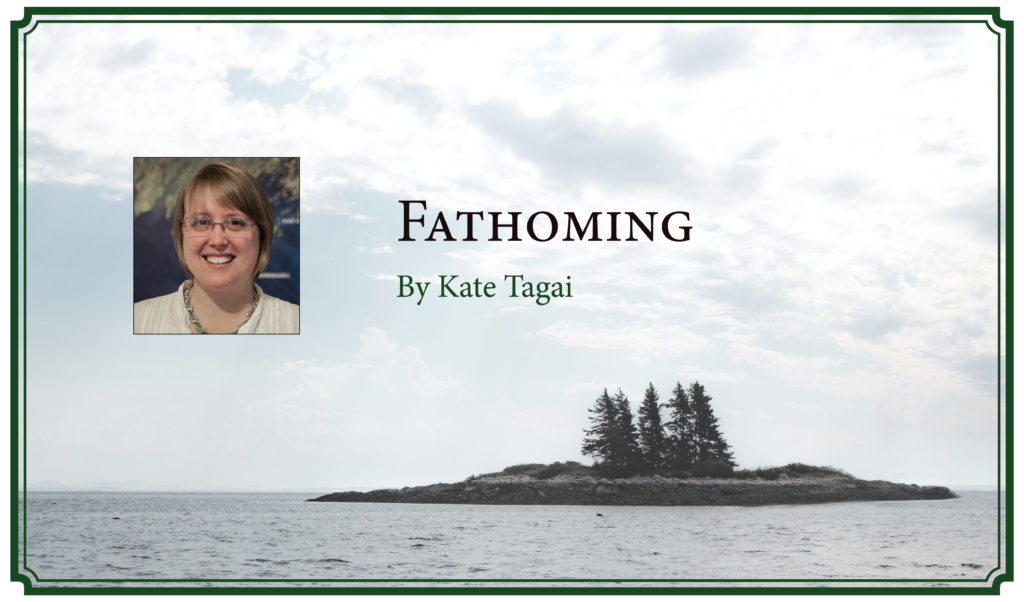By Kate Tagai
Thousands flock to the Maine coast each summer to crack open the boiled red shells of lobster, drench the contents in butter, and toss it down the hatch.
Fishermen catch more than 119 million pounds annually for consumers, but Gabriela Bradt from the University of New Hampshire Cooperative Extension is looking to add a little more green to our summer plates.
Highly adaptable, able to live outside of the water for months and tolerate a wide range of water temperatures, the green crab can thrive nearly anywhere, and with no natural predators, humans are stepping up to fill that role. Researchers and fishermen hope that human predation can provide a check on burgeoning green crab populations along the coast before their voracious appetites destroy the highly profitable clam and mussel fisheries. The human predation is being done in creative ways from grinding crabs into fertilizers, using them as bait in other fisheries, to offering a bounty for every crab caught.
But none of these efforts are enough to dent the growing crab population or provide enough economic incentive for fishermen to jump into the green crab fishery. Now, Gabriela Bradt is hoping our huge appetite for seafood can be used as an advantage to build a soft-shell green crab fishery similar to the blue crab fishery in the Chesapeake Bay.
The New Hampshire Green Crab Project is training citizen scientists to track green crabs through their molting seasons to help identify when the crabs are most likely to molt. By knowing how and when male and female crabs shed their hard carapace for a new one, they can better predict the potential for fisheries and develop markets for the soft-shell crab.
Most of the year crustaceans wear a tough shell. Lobsters, with their thick tail sections and generous, meaty claws are worth the work it takes to break through their outer carapace. But green crabs have tougher shells with only a fraction of the meat inside. The work to break through it isn’t worth the meal you get out of it.
During the molting period, these problems disappear, and the green crabs become like any other softshell crab; fried and eaten whole there is barely any work for the pleasure. To help inform potential consumers and generate interest in expanding the market, the Extension has published an information sheet showing step by step how to prepare and cook the crabs, much like the placemats at many popular restaurants teaching first time visitors step by step how to dismember and eat a lobster.
There is also a blog called the Green Crab Café (www.greencrabcafe.com) with recipe ideas ranging from a simple green crab sandwich and fried green crab to more complex dishes like scallop and green crab ceviche or Vietnamese crab noodle soup.
But is information enough to overcome the stigma of eating green crabs?
Already the Extension’s work with chefs in Massachusetts and New Hampshire has created a small market for crabs as a base for soup stock and broth, but the population could sustain a much larger potential fishery and would need to in order to reduce the green crab predation on high value fisheries such as clams and mussels. Restaurants and chefs won’t buy crabs and create market demand for a product no one wants to eat.
Many other underutilized fish have gotten a reputation rebranding to boost consumer sales. The Patagonian toothfish (Dissosticus eleginoides) became the Chilean Sea Bass. The orange roughy (Hoplostethus atlanticus) had been called slimehead before it got a name change to make it more palatable to consumers.
Even lobster has been rebranded to denote the value of the place where it was caught and increase its market potential. The Maine lobster brand is currently the most profitable part of Maine’s fishing economy.
So, perhaps it is time to rebrand the green crab into something we all want to eat. Eco crab? Maine hard-shell crab? Instead of green crab: invasive species, perhaps we can change the tag line to green crab: it’s what’s for dinner.
Kate Tagai works at the Island Institute, publisher of The Working Waterfronton sea level rise, leadership, and education programming and the Island Fellows program.





